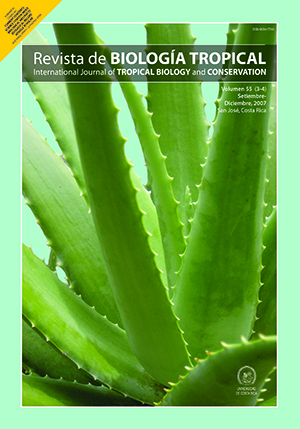Abstract
Carnivorous aquatic plants, genus Utricularia (Lentibulariaceae), capture small aquatic organisms, such as rotifers, copepods, and cladocerans, by means of anatomical structures named bladders. The present study aimed to determine prey size and composition in U. gibba and U. inflata, which were collected from a small lake and an herbaceous wetland, respectively, located in Paria Peninsula (Sucre State, Venezuela). Water pH, conductivity, dissolved oxygen, and salinity were measured in situ at each sampling location, and water samples were collected to determine N-Kjeldahl, total-P, Na+, K+, Ca++, Mg++, and Cl-. Fifty bladders from each plant species were measured and their contents were analyzed. N-Kjeldahl and total-P values were similar in both sites, and were also similar to values reported for eutrophic ecosystems, although Na+, K+, Ca++, Mg++ concentrations and in situ water parameter values were higher in the herbaceous wetland. Bladder content showed the following zooplankton groups: rotifers, cladocerans, copepods, annelids, rhizopodeans, and insects; and the following phytoplankton divisions: Bacillariophyta, Chlorophyta, Cyanophyta, and Euglenophyta. U. inflata presented smaller and fewer bladders, but higher abundance and total algal and animal morphospecies richness than U. gibba. Prey composition similarity at the taxon level between the two carnivorous species was low.##plugins.facebook.comentarios##

This work is licensed under a Creative Commons Attribution 4.0 International License.
Copyright (c) 2007 Revista de Biología Tropical






